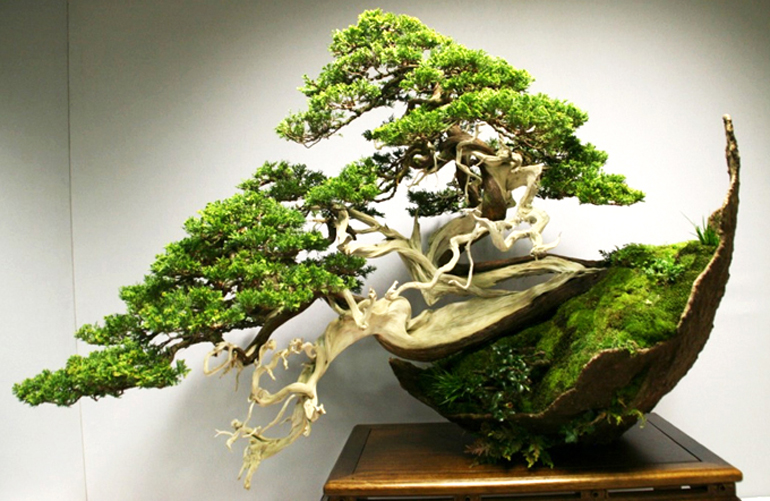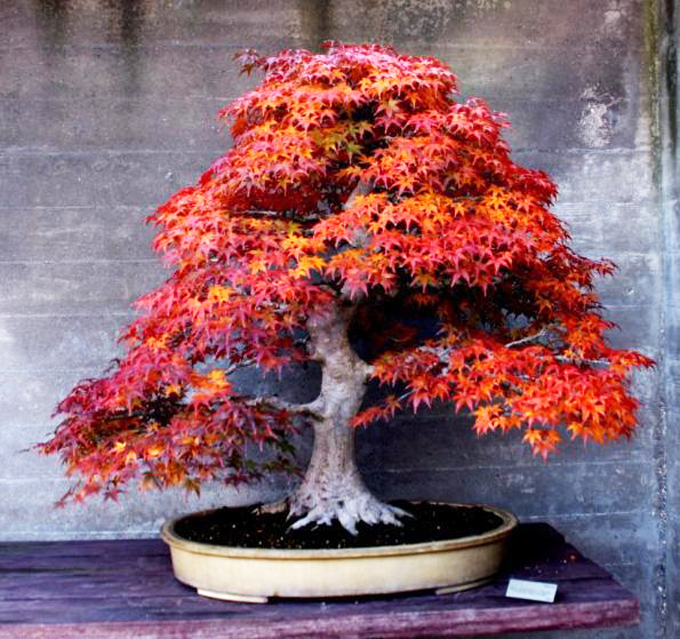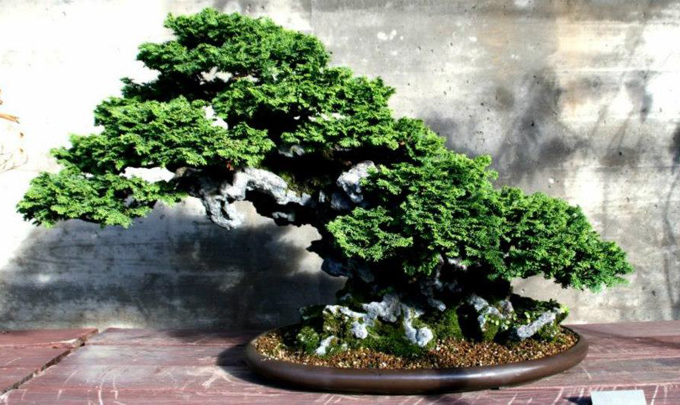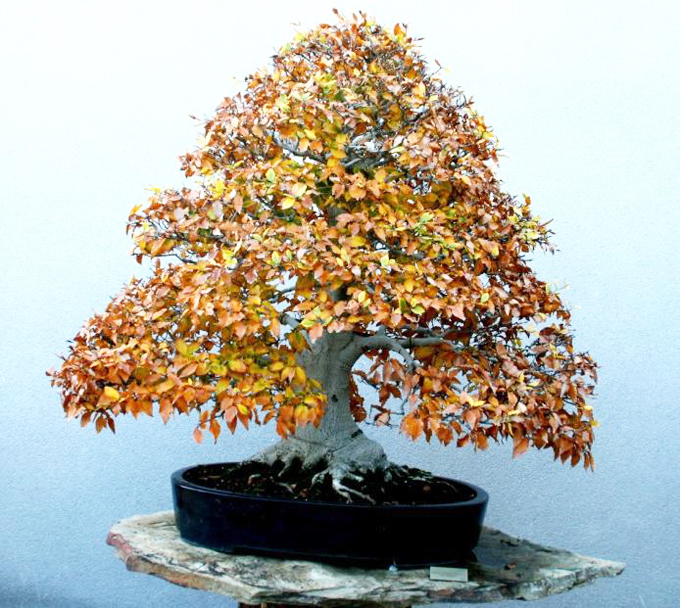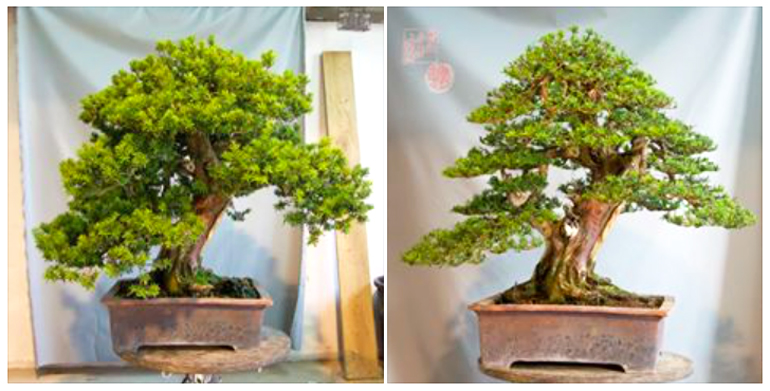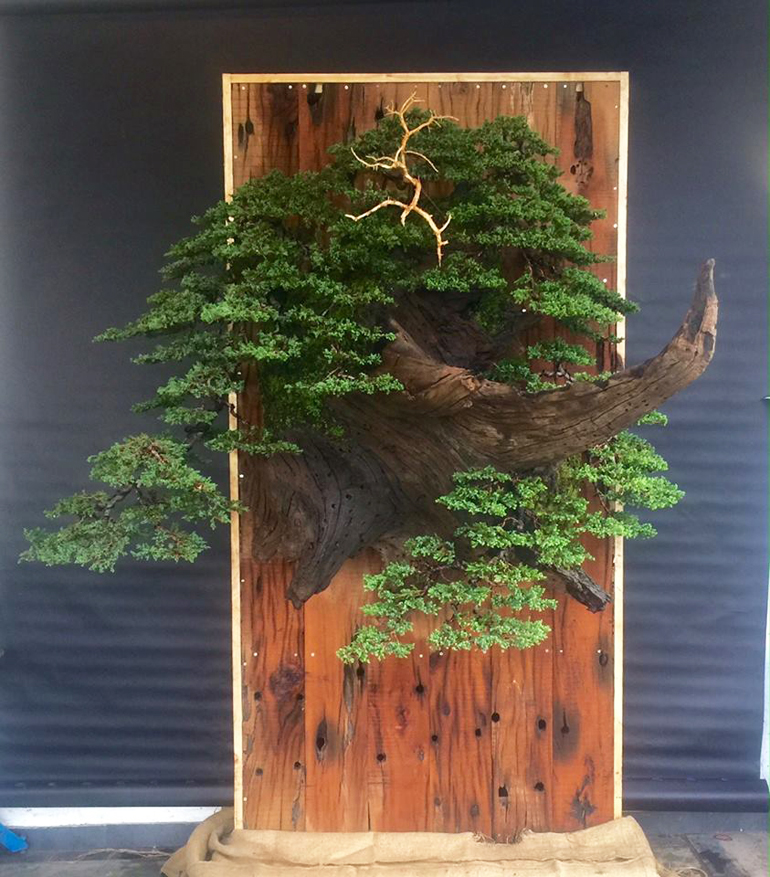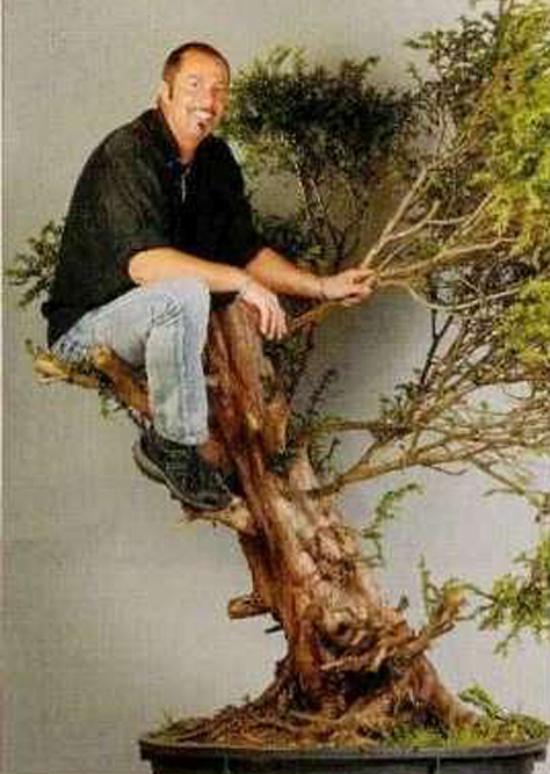This rugged sinuous root raft-style planting is by our friend, Robert Steven. I don't know the variety, but my guess is that Robert will let us know.
We’ve added one photo (just below) to this post on raft-style bonsai that originally appeared here in August 2015
We don’t need to say much about raft-style bonsai – Peter Adams has it covered below -except that all the bonsai rafts shown here are sinuous root style (netsunagari in Japanese) as opposed to rafts with straight line trunks, like nature’s raft just below
NEW LOWEST PRICE YET
KILO BONSAI WIRE
ONLY 14.95 PER ROLL
Only 13.45 off with your 150.00+ discount
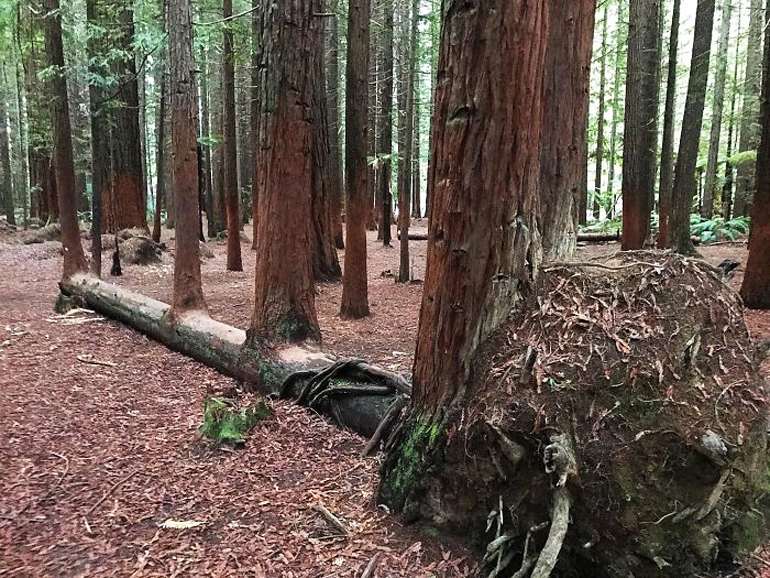
Nature's raft. It's a straight one, rather than a sinuous-root raft, but you get the drift. You can still see some of the fallen tree's root mass on the right. In order for the raft to live, some roots from this mass must remain anchored in the ground until the new roots form underneath the fallen trunk. Thank you to Janet Gossett for sending us the photo
The section just below by Peter Adams originally appeared on Bark way back in 2010.
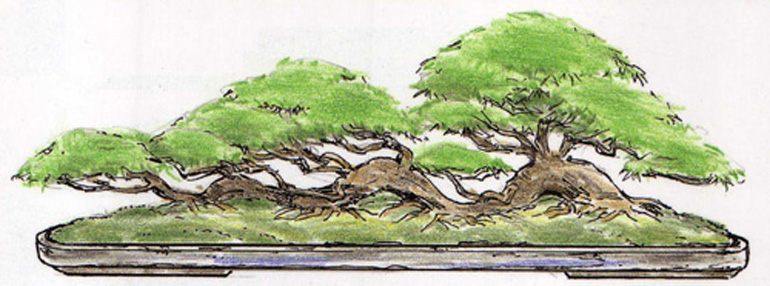
This very well rendered drawing by Peter Adams is from his book 'Bonsai with Japanese Maples.' It appears in a section called 'Creating Raft Trees' and on the back cover of the book. Whether or not this drawing comes from a tree in Peter's collection or is just from his imagination, we can't say
Rafting in Peter’s own words… “The raft method… is formed by laying a tree on its side and encouraging it to root along the recumbent trunk. The branches on the underside of the old trunk are removed to facilitate it lying comfortably in the new posture. Other branches are left and are developed into trees.”
I think Peter’s drawings are more or less self explanatory, depending on your experience. If you’d like more detail, try the book
You can use a box while roots are developed along the trunk, and if you can't afford a suitable pot, you can always leave it there.
The early steps: top to bottom. Notice how the upper limbs are wired to form interesting trunk shapes and how the lower limbs are removed before potting.
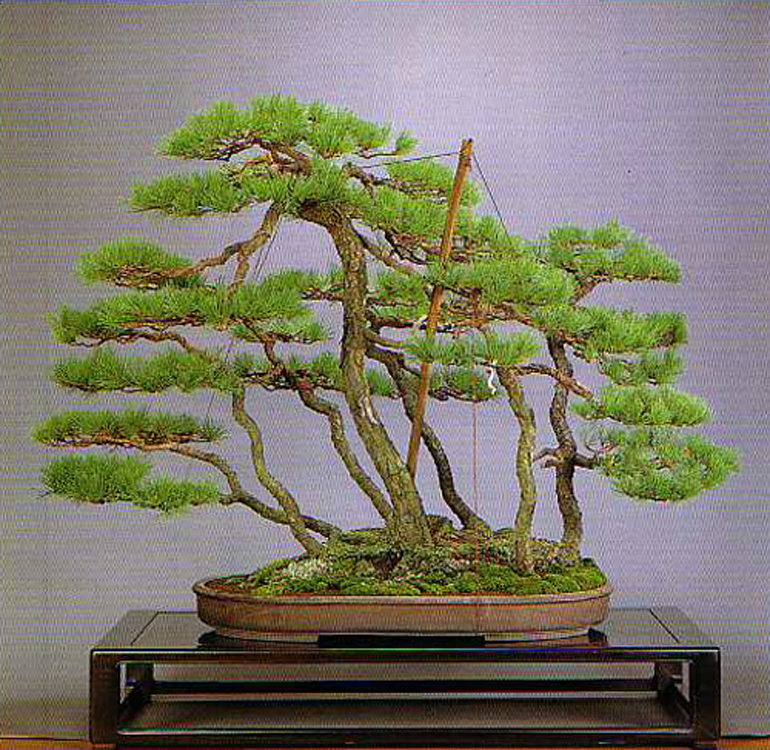
Where it all started. Sinuous root Japanese white pine after restyling by Isaburo Nishiyama. According to an article that appears in Bonsai Today issue 44, this the first netsuranari (sinuous root style) bonsai. It came to light in 1937 at a famous Japanese auction where it was distinguished from the older clump style bonsai. Most original sinuous root bonsai are Japanese white pines. That's a bamboo stick supporting the guy wires.
This one is a Hawthorn. You don’t see too many Hawthorn rafts (I know of no others) and I don't think I've ever seen one that overflows the pot on both ends. Speaking of, that perfect pot was made by the owner of the tree, John Pitt, a well-known bonsai potter.
NEW BONSAI BOOK SPECIAL
All of Our Vast Selection of Bonsai Books
20% to 75% off List Prices

Here's a sinuous root bonsai where the original trunk is completely buried (or almost completely, I can't tell for sure). It's a Rockspray Cotoneaster (Cotoneaster horizontalis) in splendid fall color, by Bill Valavanis of International Bonsai. BTW: Bill, like Robert, is another old friend who seemingly keeps track of the entire bonsai universe.
The Japanese maple raft belongs to Stephen Dodds from Belfast Northern Ireland. It was originally purchased from Willowbog Bonsai. I like the way it arches up out out of the ground (twice), just like Peter's drawing (above). For more on this tree you can visit Bonsai Baker (Stephen's blog) and two Bark posts from 2012 (here and here).
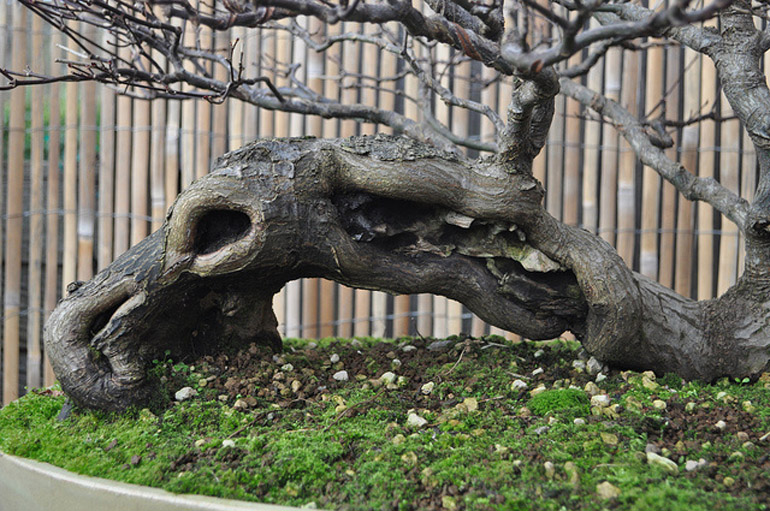
Close up
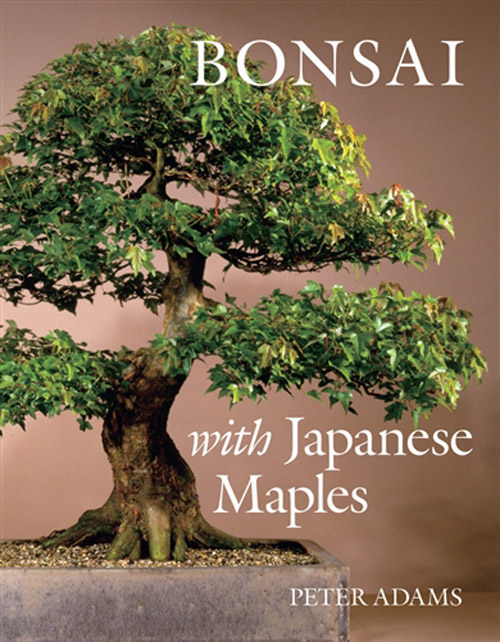
The drawings and the quoted text above are from this book
And yes, we know that’s a Trident maple on the cover
not a Japanese maple (not sure what Peter was thinking)
Still, misleading cover and all
it’s available at Stone Lantern.
List price 34.95 – Special Only 22.95
additional 10% off orders 150.00 or more
FREE Shipping on Continental U.S. orders 75.00 or more
but only if you choose free shipping when you check out

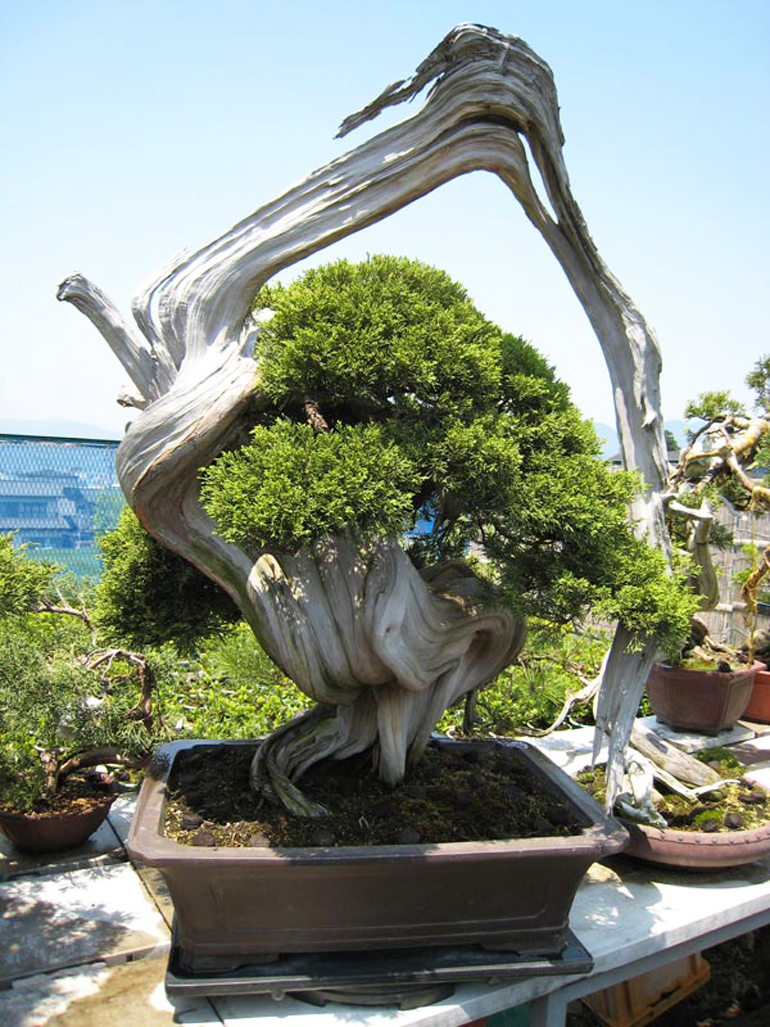
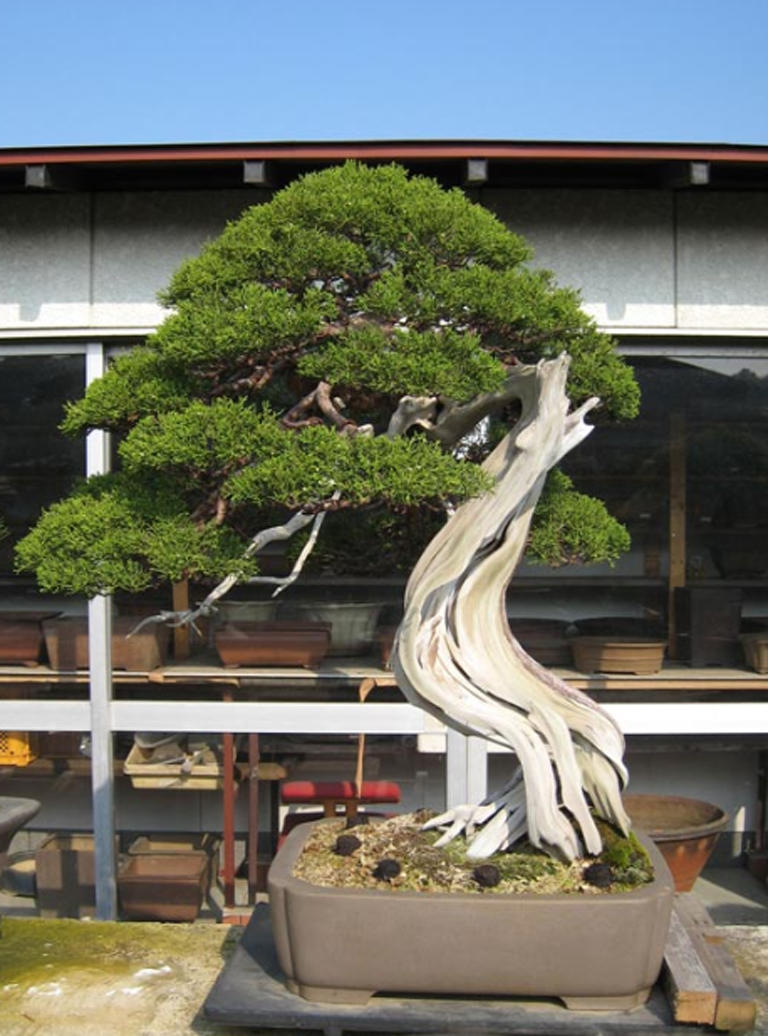
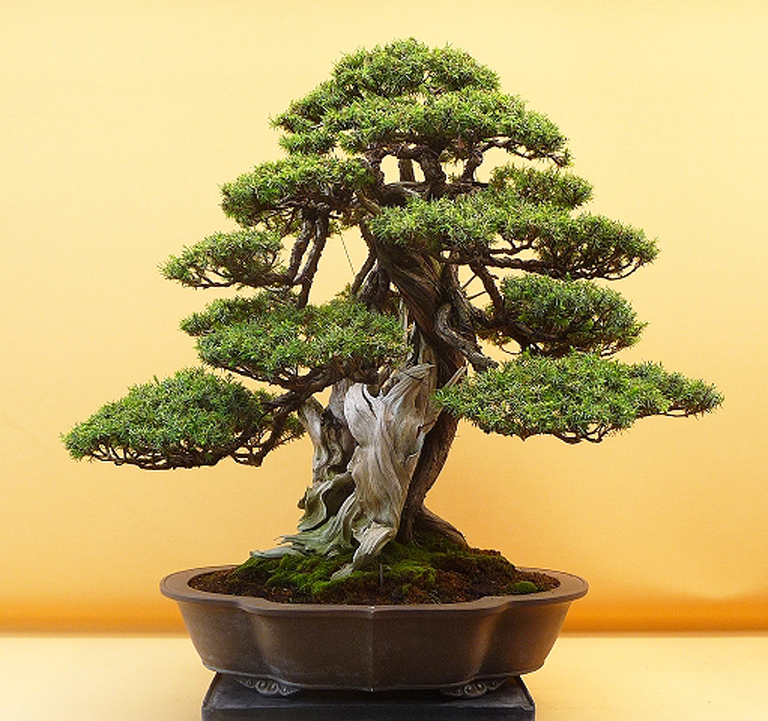
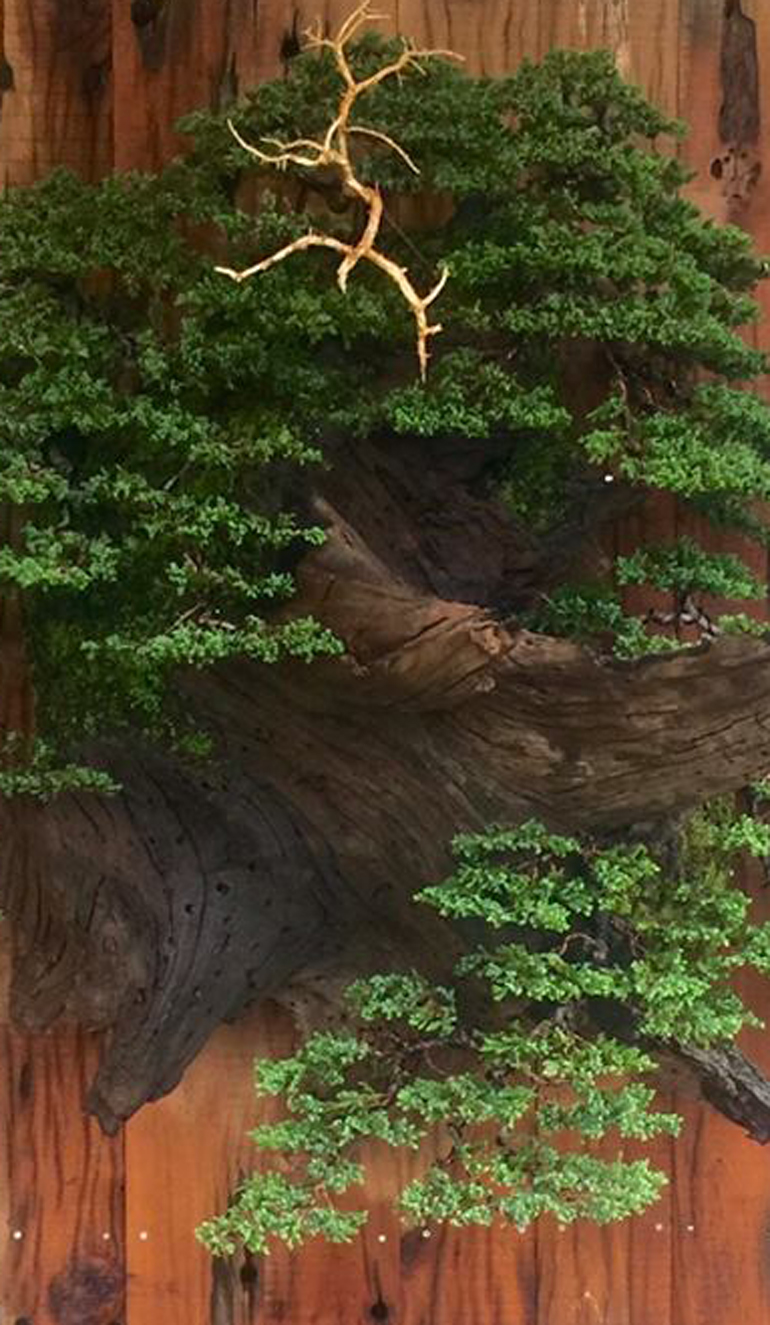
 What I failed to mention about this photo that we featured yesterday, is... that's a
What I failed to mention about this photo that we featured yesterday, is... that's a 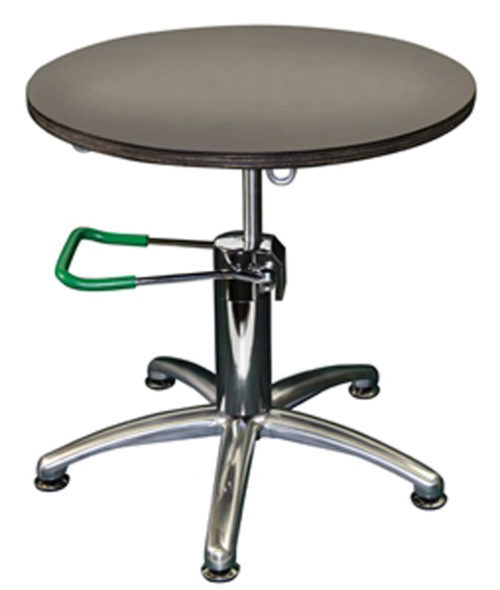
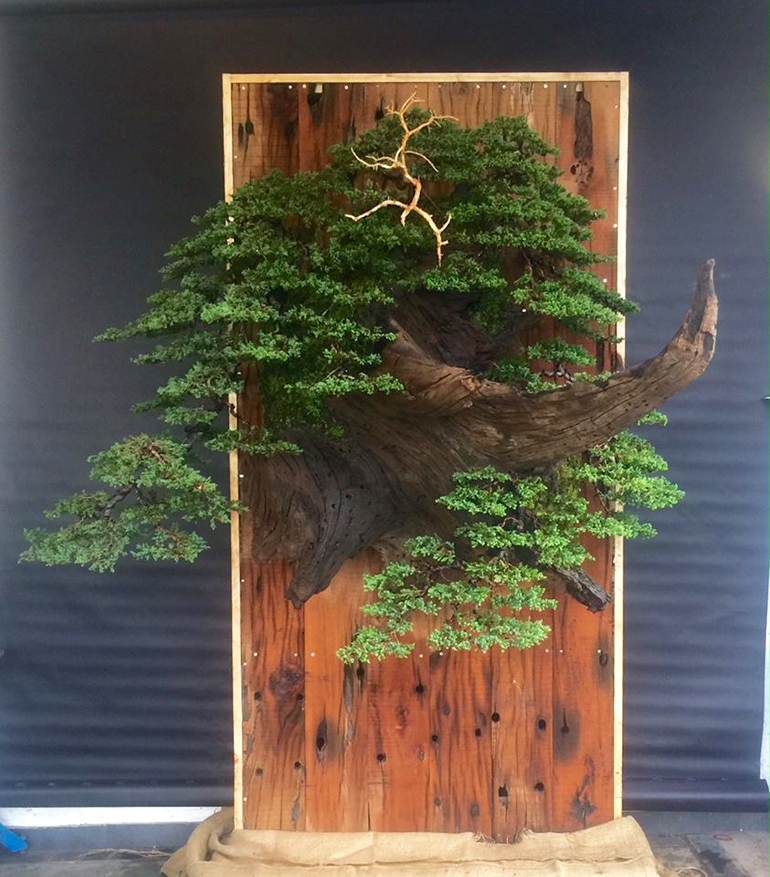
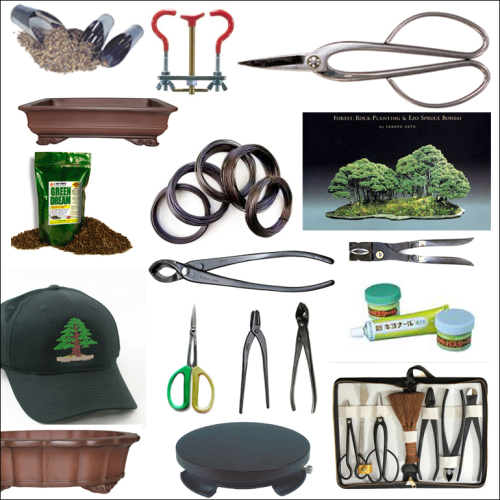
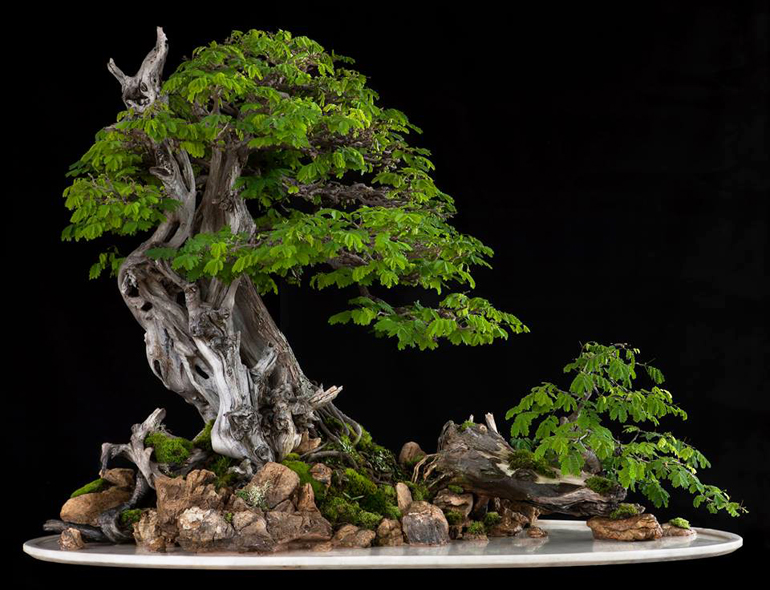
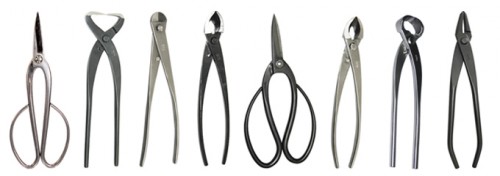
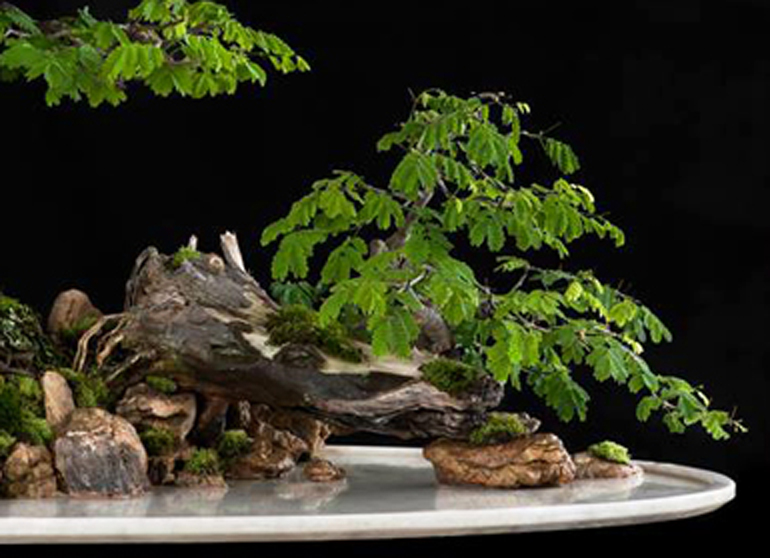
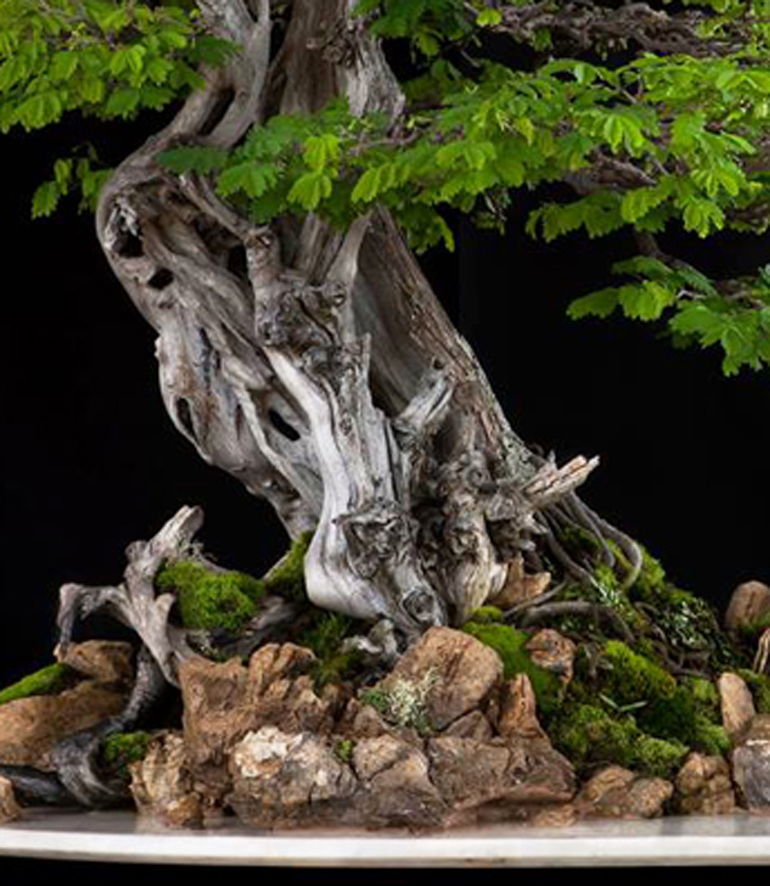


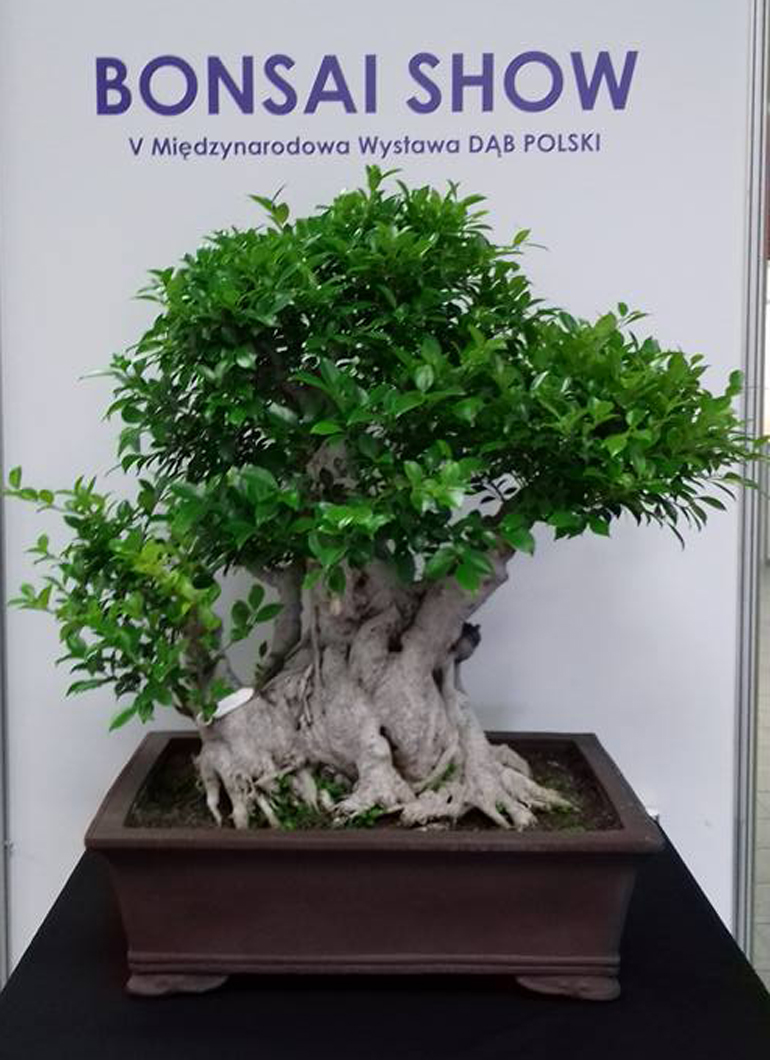 A gnarly, gnarled old Ficus
A gnarly, gnarled old Ficus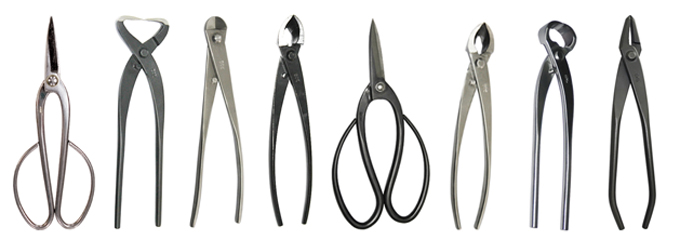
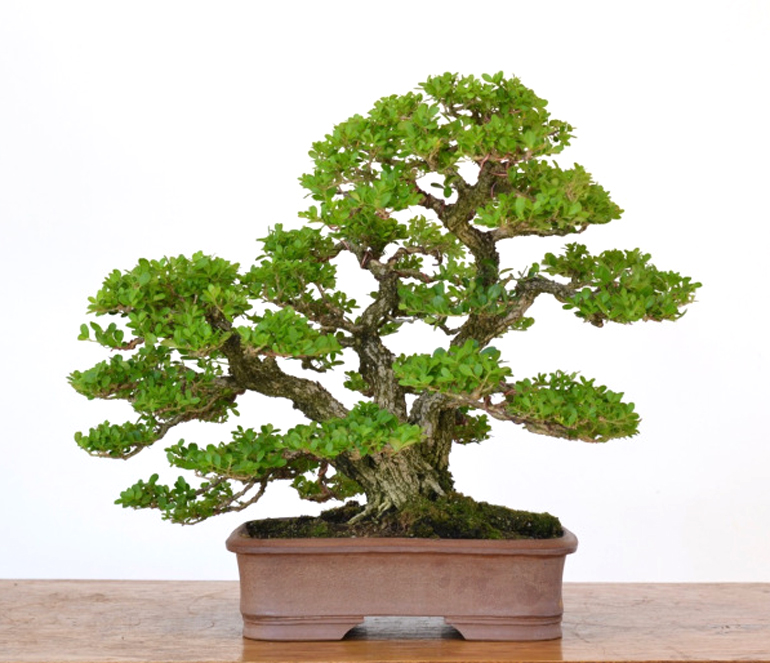 Michael Hagedorn's Japanese boxwood. Here's part of what Michael wrote about this tree (from his
Michael Hagedorn's Japanese boxwood. Here's part of what Michael wrote about this tree (from his 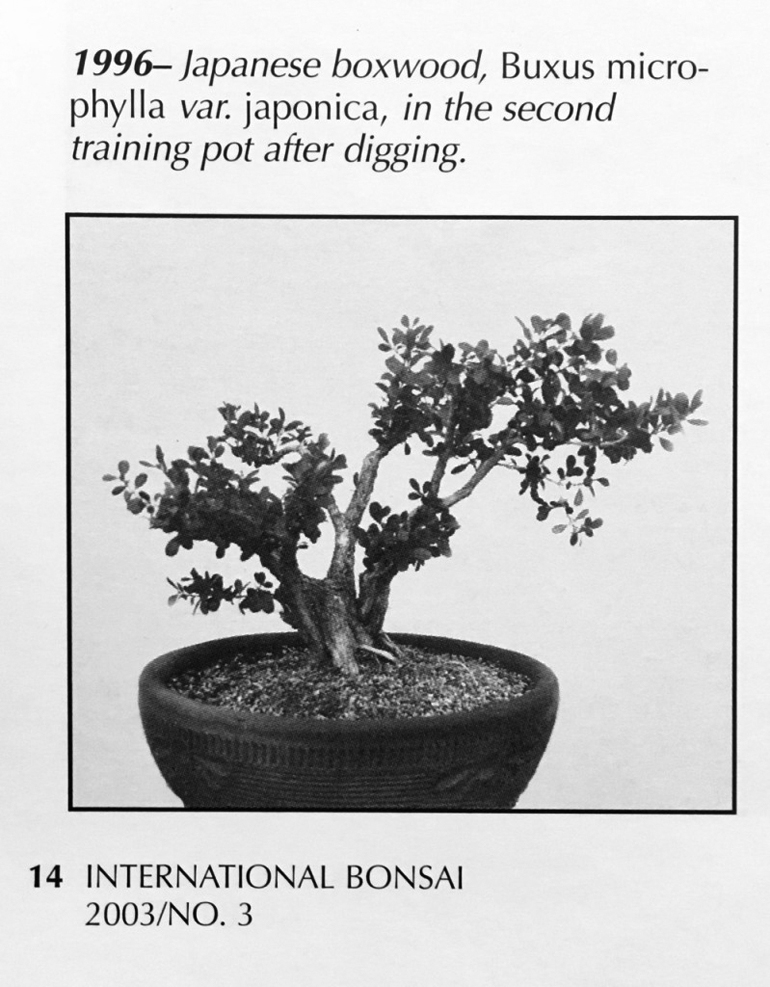
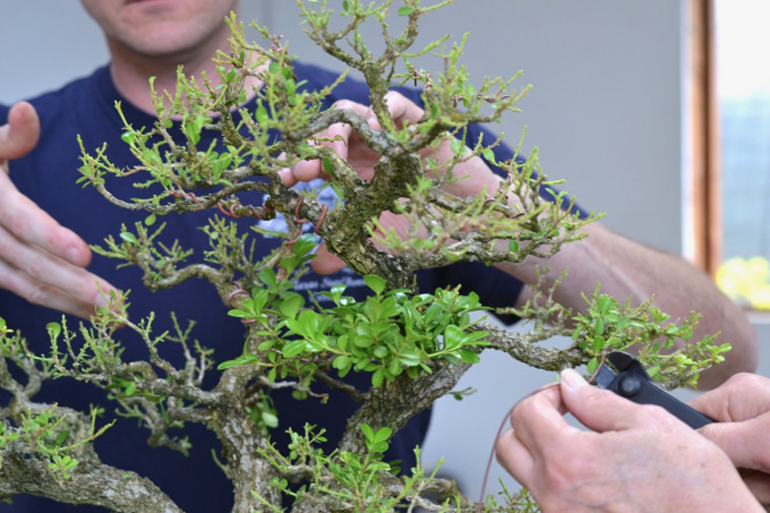 Somewhere between before and after (but much closer to after). Here's Michael's caption... "View of the Edward Scissorhands event close up"
Somewhere between before and after (but much closer to after). Here's Michael's caption... "View of the Edward Scissorhands event close up"